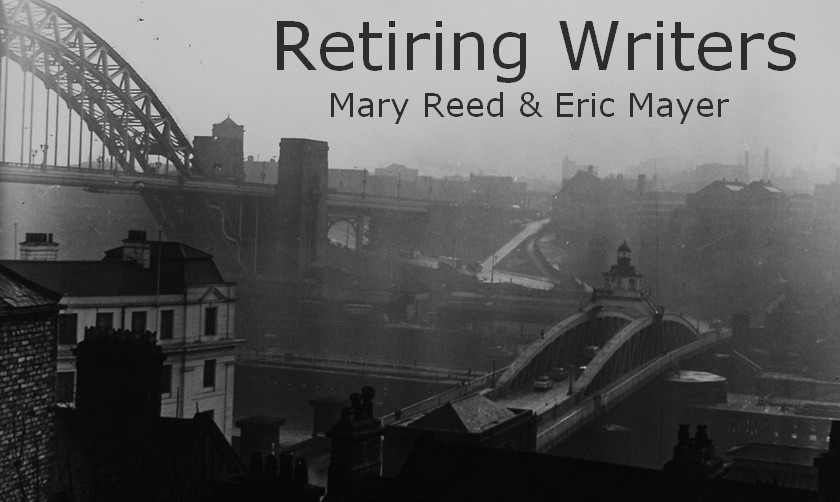Before Mr Maywrite and I took to tramping down the dark and dangerous alleys and hidden courtyards of fiction featuring murder, mayhem, and malfeasance we both wrote non-fiction. His field was legal articles while mine were often devoted to such off-beat topics as Doctor Merryweather's leech-powered Tempest Prognosticator, swan upping, cheese-rolling, weather forecasting goats, and the disappearance of Doctor Foster.
Years later and with more experience in unravelling mystery plots I've decided to revisit the case of Doctor Foster to speculate further on what happened that rainy day in Gloucestershire. Let us examine the information we have as preserved in the nursery rhyme:
In a shower of rain
He stepped in a puddle
Right up to his middle
And never came home again
I put it to the jury that, as I shall demonstrate, Doctor Foster was not on his way to attend to a patient in crisis even though he was out walking in what was obviously a downpour.
This demonstrates he did not have a wealthy practice, indicating he resided in the country. To argue the point we must consider if he possessed a carriage. Given he did and he was not riding in it the day he disappeared strongly indicates it must have been at the blacksmith's smithy for repairs to a broken spring or axle. Further, the presence and depth of the puddle clearly demonstrates the local council was not doing much of a job keeping roads in good repair and safe for the passage of carriages, carts, and other conveyances lends weight to his walking to Gloucester. It also supports his being a rural practitioner on the grounds if he lived in town there'd be transportation methods other than shank's pony available to him.
Why didn't he see the fatal puddle? Was his eyesight not all it should be? Doubtful, considering his profession. However, given the puddle was half his height, flooding from the downpour must have been high enough to conceal a pothole deep enough to engulf him to the waist, another indication of the parlous state of the thoroughfare he was travelling.
The cautious investigator should not rule out the role his umbrella played in the tragedy. What do we do with our gamp when it's stotting down? We position it to keep rain off our head and shoulders. Was his umbrella tilted at such an angle as to obscure his view of the tell-tale indication of a pothole by a dip in the flow of the current?
The next question is why was he going to Gloucester in the first place? It is large enough to be the home of numerous doctors so his travel there in such foul weather is intriguing. But consider: Gloucestershire is known for its cheeses. I posit he'd developed a fancy for toasted cheese sandwiches after a discussion at his local hostelry the previous evening concerning the annual cheese-rolling race held each spring at Cooper's Hill, about five miles from Gloucester.
Alas, both his larder and the village grocer were bereft of this particular dairy product so, next morning, Doctor Foster, a true turophile, braved the weather and started off to town to purchase the necessary amount of Double Gloucester cheese with which to cook this excellent snack. It may not have been raining when he got up but his tempest prognosticator indicated an imminent storm so he naturally took his umbrella.
Mystery readers would be inclined to deduce from these points that the good doctor met his end by foul play. Given known weather conditions, it's unlikely there'd be anyone out and about to give him a lift or help him out of the pothole. But somebody reported his dilemma as otherwise it would not be documented in the nursery rhyme. Could it be the road was in such bad condition that Doctor Foster was rescued from one pothole only to step into another just as deep after his good Samaritan left the scene? Was there a gentleman of the road, one of evil intent, passing along the road to Gloucester that fateful day? Sadly, history has shown there are those who would drown a trapped man for the sake of a pocket watch and an umbrella.
We now have motive, method, and opportunity. Based on this conclusion, Mr Maywrite is of the opinion the authorities should have been on the lookout for a tramp with a gamp, to which I add one in possession of a pawnbroker's ticket for a handsome timepiece.


